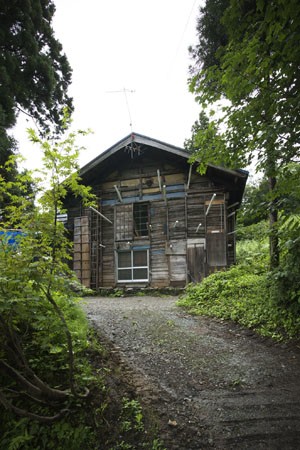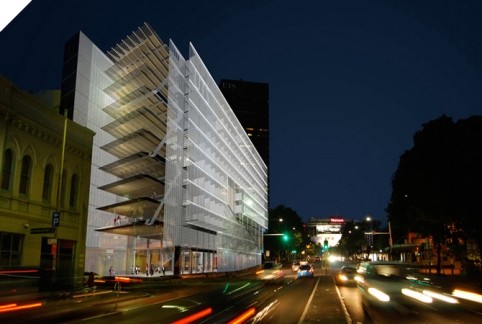A competition was held to select an appropriate designer or team of designers for the new Australia House as one of the main art projects of the upcoming Echigo-Tsumari Art Triennale in 2012, after he building collapsed in the wake of the earthquake in Japan on March 12, 2011.
 Australia House before it was destroyed by a March 12 earthquake. TAKENORI MIYAMOTO + HIROMI SENO. Image: Japan Times
Australia House before it was destroyed by a March 12 earthquake. TAKENORI MIYAMOTO + HIROMI SENO. Image: Japan Times
The public call for the design proposal for the new Australian House was open to receive ideas from 1 to 15 September 2011 and 154 proposals were received and reviewed by the jurors.
The proposal by Burns, who runs his own practice, Andrew Burns Architect in Sydney, Australia, meets the conditions set out for the competition, "reasonable, robust and small". Burns will be visiting the site for the new Australia House in Echigo-Tsumari at the end of October.
Echigo-Tsumari announced that Ando's comment and Burns's proposal will be announced 'in due course'.
 (Images via Andrew Burns Architects) Burns work was also recognised through a competition 2009 for the UTS Podium scheme for the existing tower building on Broadway, Sydney. The scheme created a stepping geometry, reconciling the irregular shape of the site. The proposal inverted the materiality of the tower; replacing the solid bands of concrete and small bands of glazing with more generous bands of glazing, separated by slender bands of concrete.
(Images via Andrew Burns Architects) Burns work was also recognised through a competition 2009 for the UTS Podium scheme for the existing tower building on Broadway, Sydney. The scheme created a stepping geometry, reconciling the irregular shape of the site. The proposal inverted the materiality of the tower; replacing the solid bands of concrete and small bands of glazing with more generous bands of glazing, separated by slender bands of concrete.
 And in the UTS Broadway competition, which called for a new building to accommodate the departments of IT and Engineering, a proposal in association with Hamish Watt created a highly rational and flexible floorplate, terminated at each end by generous balconies and elevated gardens. A large staircase leading from the ground to upper research levels was expressed on the façade, a welcoming gesture responding to the University’s aspiration for engagement with industry beyond the campus.
And in the UTS Broadway competition, which called for a new building to accommodate the departments of IT and Engineering, a proposal in association with Hamish Watt created a highly rational and flexible floorplate, terminated at each end by generous balconies and elevated gardens. A large staircase leading from the ground to upper research levels was expressed on the façade, a welcoming gesture responding to the University’s aspiration for engagement with industry beyond the campus.

